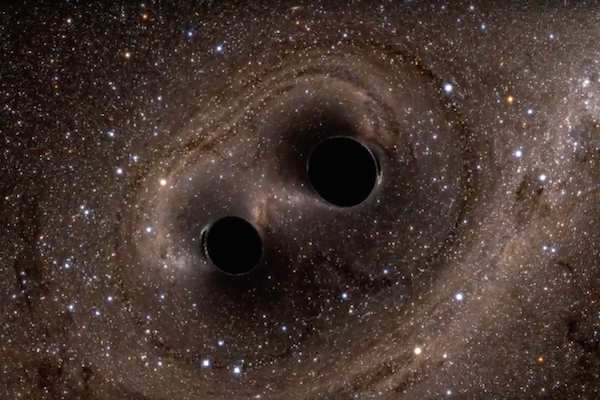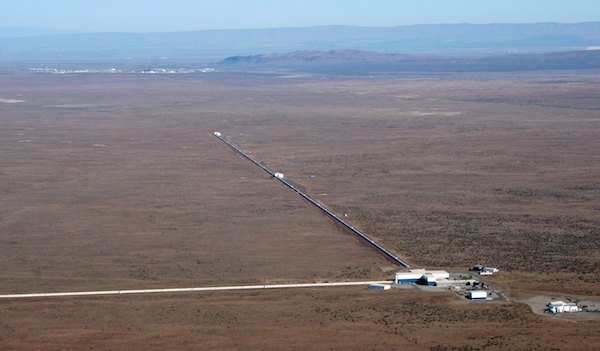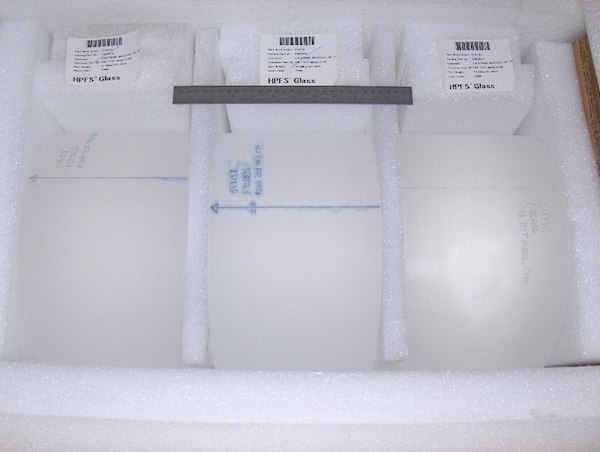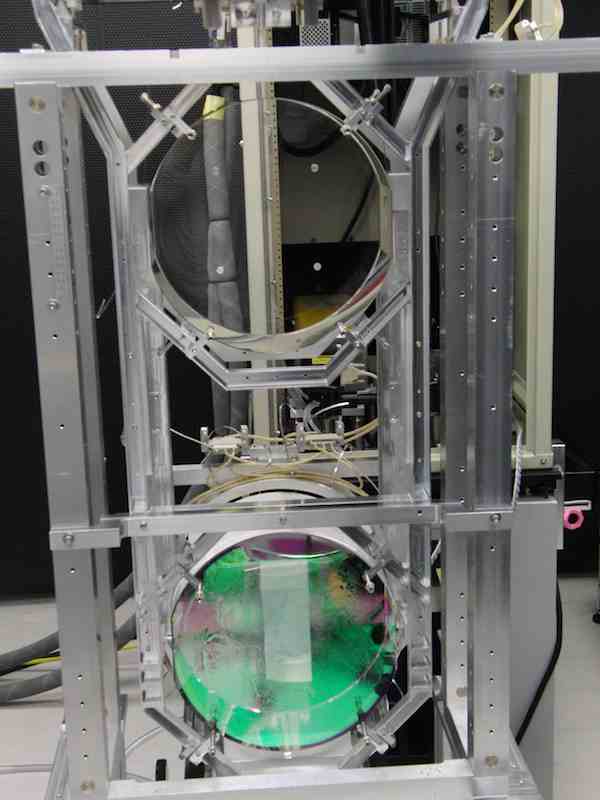
[Image above] A simulation shows the dance between two black holes before they merge into one, an event that created gravitational waves that scientists on earth have detected for the first time. Credit: caltech; YouTube
It seems rather fitting that 100 years after Albert Einstein published the general theory of relativity, we now have proof of what we knew all along: Al was right—spacetime is officially rippling.
Yesterday scientists announced that the Advanced Laser Interferometer Gravitational-Wave Observatory (LIGO) officially detected gravitational waves. Countless scientists have checked the calculations, re-checked the measurements, and made absolutely sure this time—general relativity is a go.
Hear more about the landmark discovery in this short video from Science magazine.
Credit: Science Magazine; YouTube
LIGO—which observatory executive director David Reitze described during an NSF press conference yesterday announcing the discovery as the most precise measurement instrument ever built—is a huge laser optics device. The interferometer can measure incredibly small disturbances, those that register in the range of a miniscule fraction of the width of an atomic nucleus.
To detect such small differences, the observatory—well, a pair of identical observatories, one in Livingston, La., and one in Hanford, Wash.—measures laser light that is split into two beams, shone down a couple of opposing 4-km-long tunnels, bounced back, and measured with light detector.

The large setup of LIGO Hanford. Credit: LIGO
All of those components must be painstakingly precise to be able to measure a phenomenon so small in a world that is so awash with interfering vibrations and movements. So the LIGO observatories house some of the most complex, expensive, and precise optics setups out there.
LIGO’s critical laser beam-reflecting mirrors, called test masses, are huge hunks of fused silica supplied by Corning Inc.
Each mirror weighs a hefty 40 kg and is cast from an “ultra-pure material with low hydroxide content to minimize infrared absorption,” according to the LIGO Caltech wesbsite. “Since LIGO’s laser is an IR laser, its optics must not absorb IR radiation. Doing so would result in heating and in significant changes to the shape of the mirrors, thus critically affecting LIGO’s ability to make the precise measurements it is designed to make. LIGO’s main mirrors only absorb one photon out of every 3.3 million, the rest being reflected (or transmitted).”

Corning fused silica substrates for LIGO’s end test masses. Credit: LIGO

One of the advanced LIGO optic systems suspended by glass fibers. Credit: LIGO
To absorb such little light, the mirrors are highly polished to nanometer smoothness and precision and are coated with dozens of layers of optical coatings to ensure that the 200-W laser beam travels precisely, smoothly, and with minimal loss through the interferometer.
Installation of such an incredible optical system was no straightforward task, either.
To minimize disturbances, LIGO’s optics float in space, suspended on glass fibers hanging from a four-part pendulum system. The complex system reduces background noise, canceling out as much measurement-disrupting movements of the world as possible.

Glass welds on one of the optics suspension systems. Credit: LIGO
Because the observatories’ arms are so long, and must be so precise, even construction of the concrete tunnels that enclose the experiments themselves was no simple task. Of course, construction would have been much more simple if only the earth was flat.
According to the LIGO website, “LIGO’s arms are so long that the curvature of the Earth is a measurable 1 meter (vertical) over the 4 km length of each arm. The most precise concrete pouring and leveling imaginable was required to counteract this curvature and ensure that LIGO’s vacuum chambers were truly ‘flat’ and level. Without this work, LIGO’s lasers would hit the end of each arm 1 m above the mirrors they are supposed to bounce off of!”
Beyond the engineered concrete tunnels, the interferometers themselves sit on top of 75 cm-thick reinforced concrete floors that help quiet seismic vibrations.
And did I mention that the whole experiment is done in a vacuum? No wonder the hunt for gravitational waves has cost hundreds of millions of dollars.
It’s a steep investment, but the discovery is more than just a single discovery—instead, it opens up a whole era in science, a whole dimension of exploration beyond our pale blue dot.
As Reitze commented in the NSF live press release, “What’s really exciting is what is to come next—we’re opening a window on the universe.”
The paper describing the discovery, published in Physical Reviews Letters, is “Observation of gravitational waves from a binary black hole merger” (DOI: 10.1103/PhysRevLett.116.061102). [Be sure to look at the length of that list of authors!]
